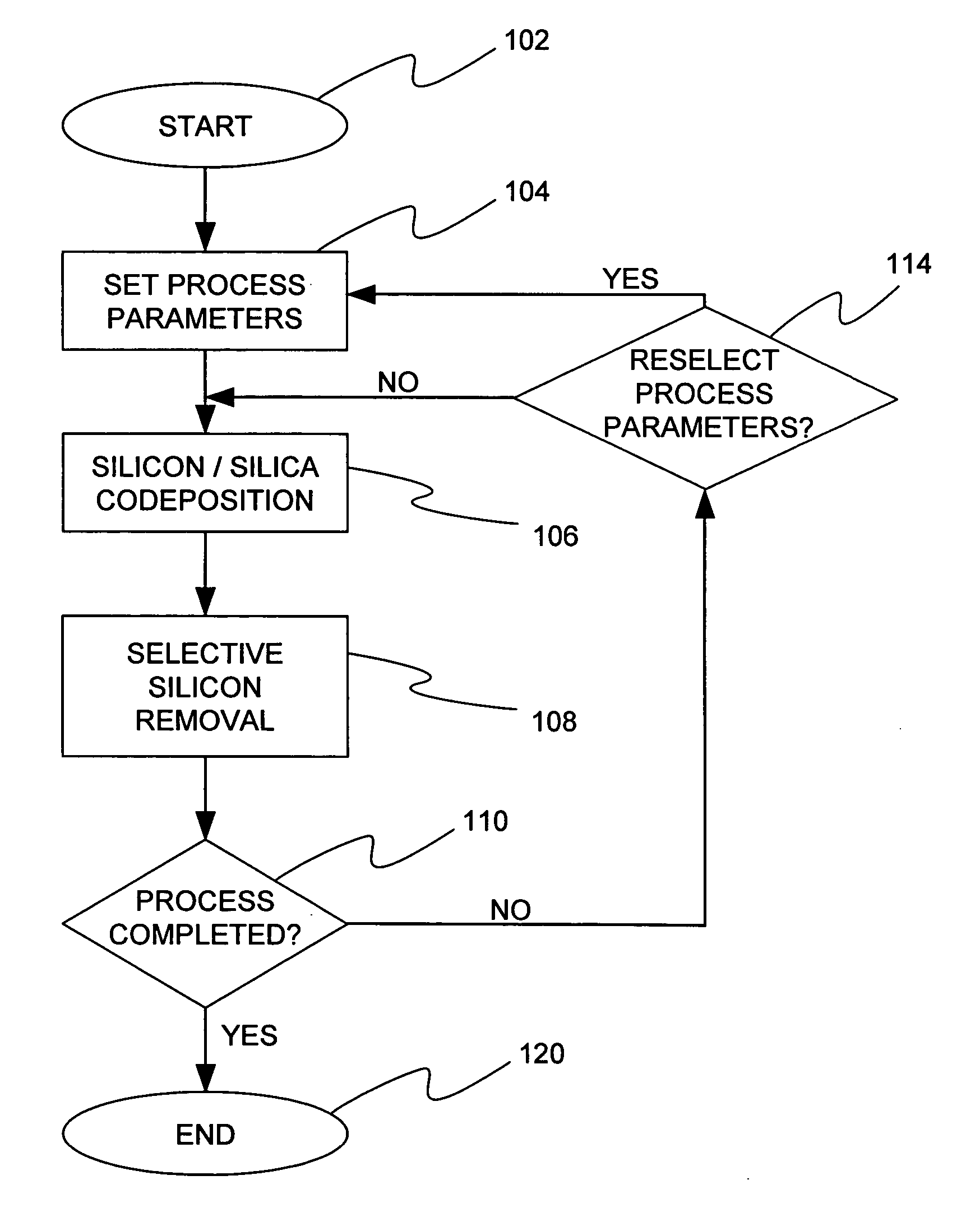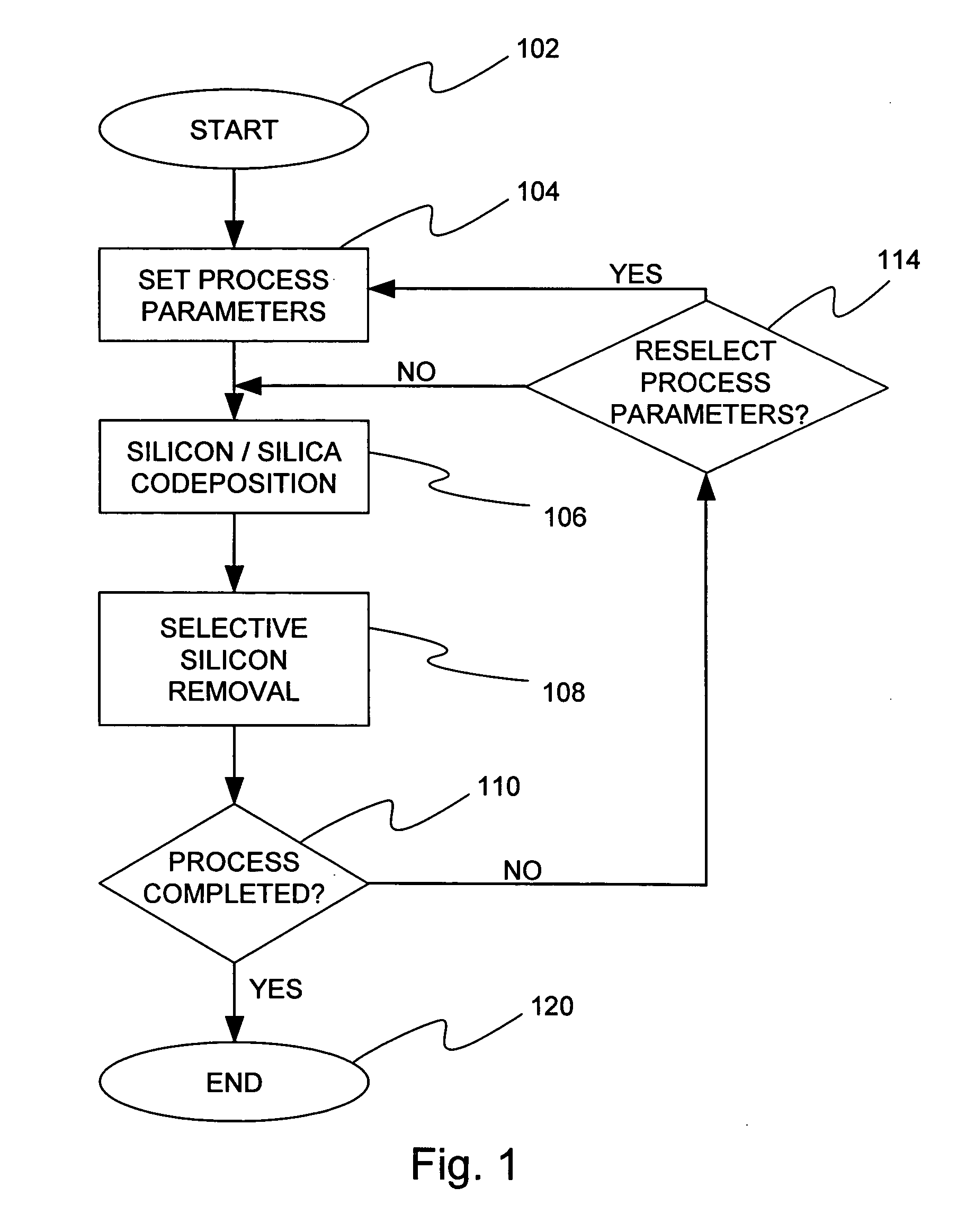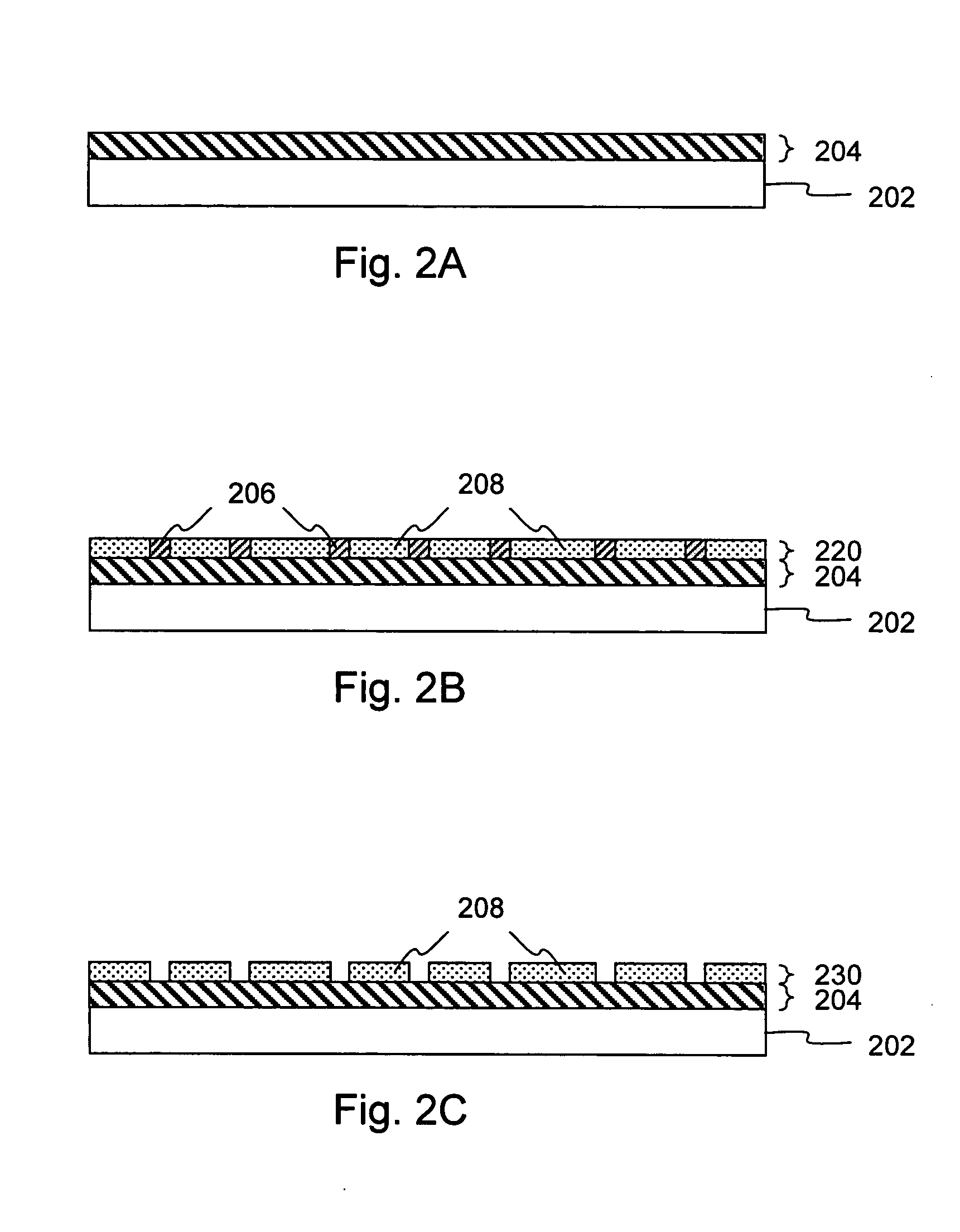Method for depositing porous films
a technology of porous films and processing methods, applied in the direction of basic electric elements, electrical apparatus, semiconductor devices, etc., can solve the problems of less than desired final dielectric constant, not ready for manufacturing considerations, and the amorphous carbon technology is still very immature, so as to facilitate and optimally control the codeposition and selective silicon removal steps
- Summary
- Abstract
- Description
- Claims
- Application Information
AI Technical Summary
Benefits of technology
Problems solved by technology
Method used
Image
Examples
Embodiment Construction
[0031] The present invention provides a process method for forming porous silica or doped silica films on a substrate for semiconductor integrated circuits fabrication. The method is also generally applicable for forming porous films of other host matrix materials using the features described in the disclosure. For simplicity in discussion, we shall focus the description primarily on porous silica films.
[0032] According to the invention, the method entails a cyclic process scheme to form the film. In each cycle, a thin layer of silica and silicon or doped silica and silicon are first codeposited. (The codeposited film may be commonly viewed as a silicon-rich oxide or silicon-rich doped oxide). Then, the silicon is selectively removed from the codeposit to create a porous silica structure. The processing steps are repeated alternately to build up the thickness of the film. In this description, the conditions and implementation of the invention are further detailed.
[0033] For clarit...
PUM
 Login to View More
Login to View More Abstract
Description
Claims
Application Information
 Login to View More
Login to View More - R&D
- Intellectual Property
- Life Sciences
- Materials
- Tech Scout
- Unparalleled Data Quality
- Higher Quality Content
- 60% Fewer Hallucinations
Browse by: Latest US Patents, China's latest patents, Technical Efficacy Thesaurus, Application Domain, Technology Topic, Popular Technical Reports.
© 2025 PatSnap. All rights reserved.Legal|Privacy policy|Modern Slavery Act Transparency Statement|Sitemap|About US| Contact US: help@patsnap.com



